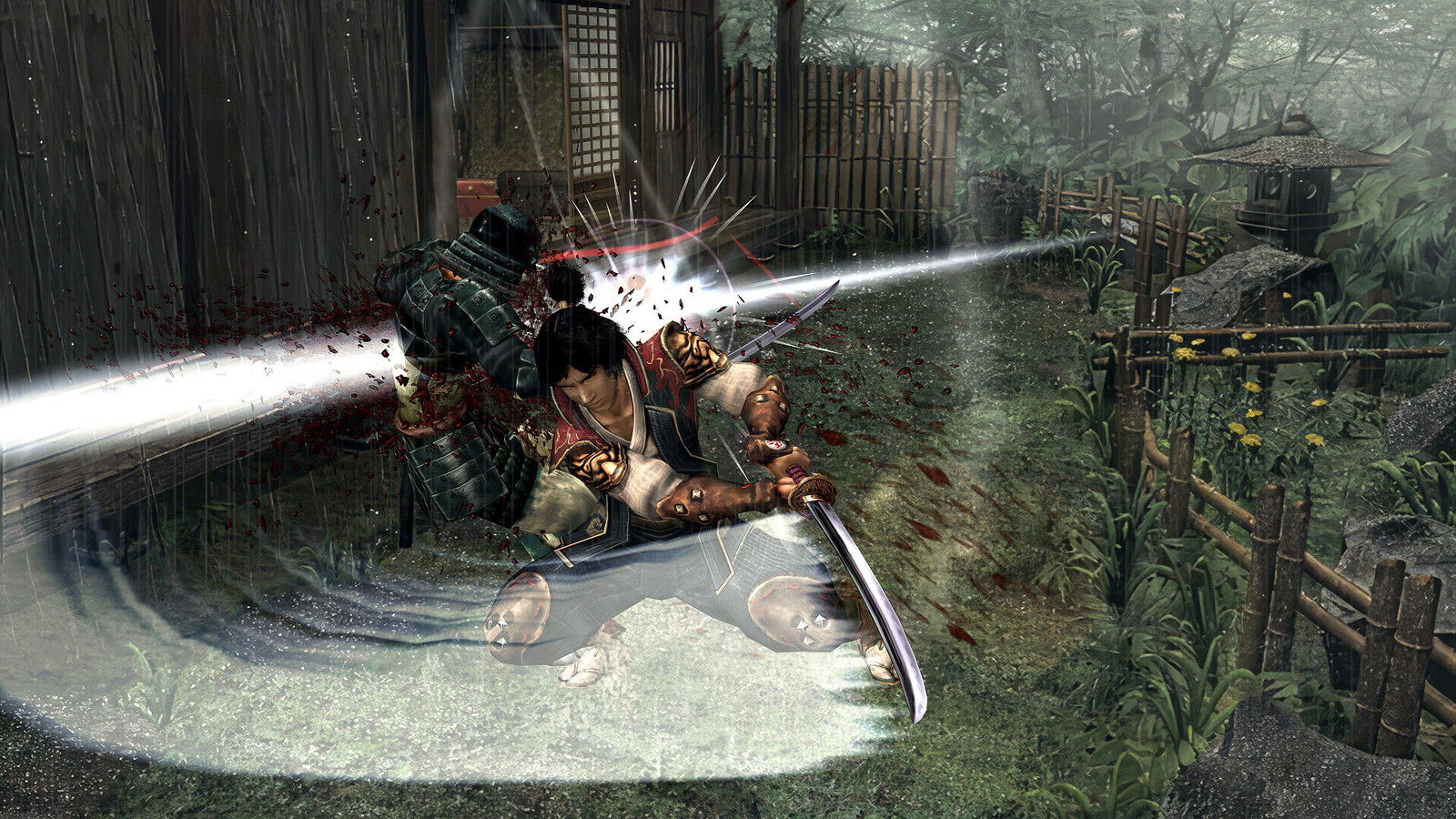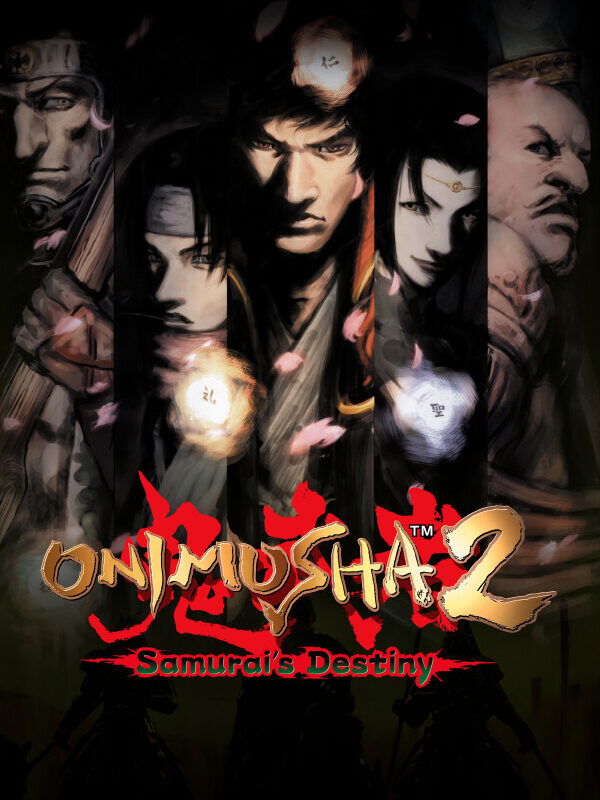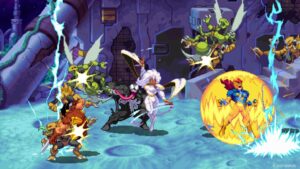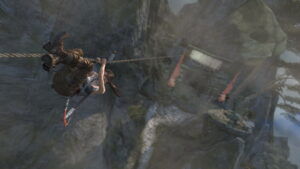Of all the Capcom games I have played whose lineage can be traced back to its Resident Evil and Devil May CDevil May Cry 5 (PS4) Reviewry origins, Onimusha 2: Samurai’s Destiny is by far the most bizarre in terms of tone. As a direct sequel to 2000’s Onimusha: Warlords, it continues the original’s focus on fast paced, hack-n’-slash samurai action, perplexing environmental puzzles, a nightmarish, zombie-adjacent threat towards humanity in the form of demons (properly referred to as “Genma”) and the undeniably cool, signature soul-sucking gameplay mechanic of the protagonist’s Oni Gauntlet (a.k.a. Demon Gauntlet).
What is lesser-known of Onimusha 2 as a game however is just how intentionally oddball and funny it is, so it’s great to see this classic get a second opportunity to shine in remastered form.
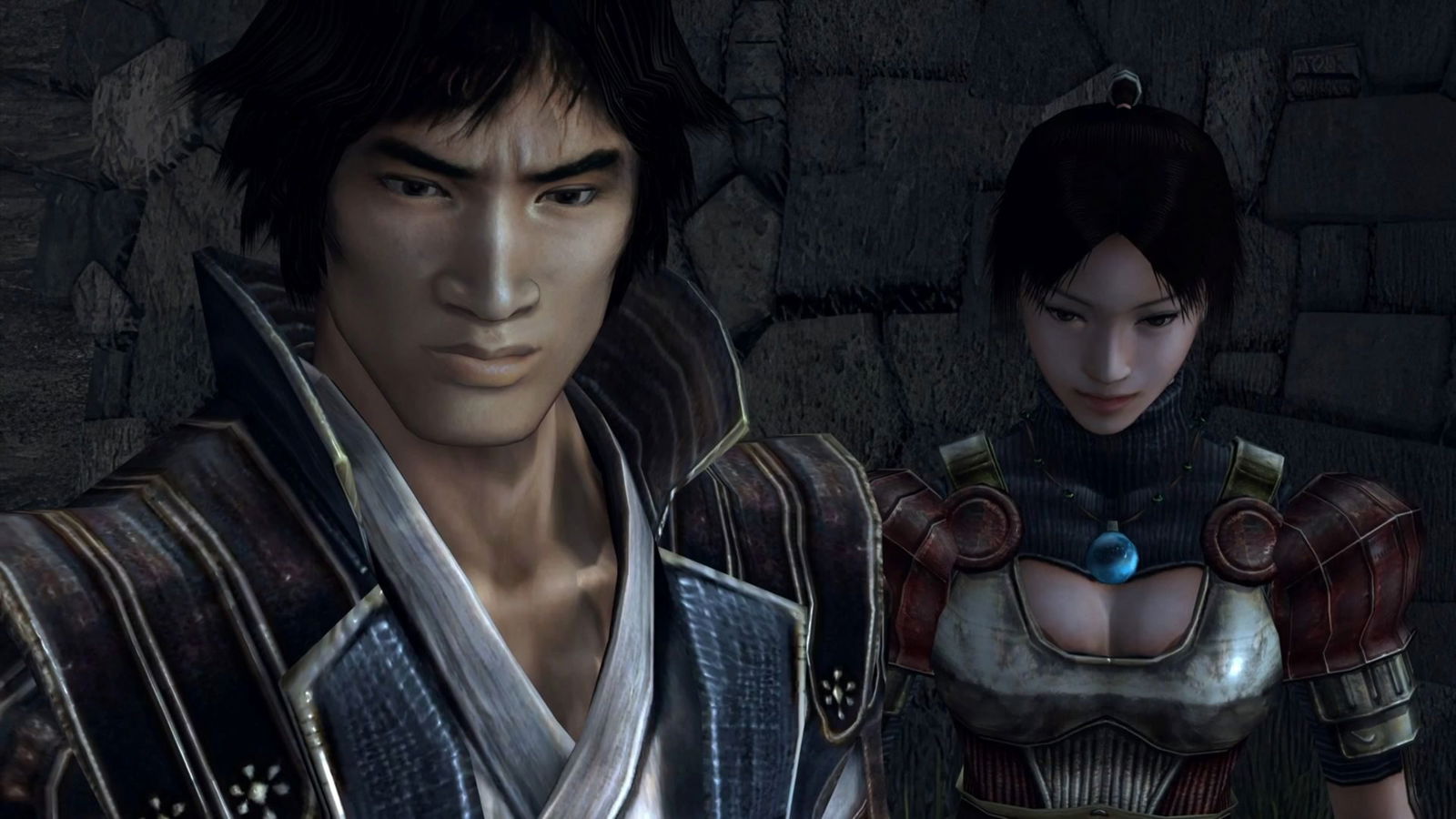
Onimusha 2: Samurai’s Destiny takes place a decade after the events of Onimusha: Warlords, where sadly, things have not gone well for humanity despite the defeat of the Genma King, Fortinbras at the hands of Samanosuke Akechi, the protagonist of the first game. Legendary Warlord-turned-Genma, Oda Nobunaga, who previously made a pact with Fortinbras to enslave humanity in exchange for being appointed as his general, has risen to rule over all Genma. Now he is on a crusade to crush all remaining resistance to the Genma, be they Oni (the sworn enemy of the Genma), human, or otherwise. Mysteriously, Samanosuke has long since disappeared, and the Yagyu samurai clan, renowned for their demon-killing expertise, are now in Nobunaga’s crosshairs.
Players take up the sword of samurai Jubei Yagyu following an attack by Nobunaga’s forces on his village that has left him as the only survivor. Soon after finding and learning of his connection to the mysterious Oni Gauntlet, circumstances lead him to team up with marksman Saiga Magoichi, warrior priest Ekei Ankokuji, ninja Kotaru Fuma, and female fencer Oyu. Each of his allies have their own personal motives for helping Jubei, but their common hatred for Nobunaga is enough to make them fast friends with our hero, at least initially.
“What is lesser-known of Onimusha 2 as a game however is just how intentionally oddball and funny it is, so it’s great to see this classic get a second opportunity to shine in remastered form.”
Gameplay-wise, Onimusha 2 retains much of the same mechanics as its predecessor, with players gradually uncovering and building up a small arsenal of outer-worldly, elemental weapons whose sole purpose is to destroy Genma. Slaying Genma releases the souls that the demons have consumed into the air in the form of floating balls of energy, where they can then be vacuumed up by the Oni Gauntlet. It should be noted that larger souls take more time to reel in than smaller ones, and since Jubei can only perform the action while standing still, he is wide open to attack, so players must manage their timing so that they don’t take damage.
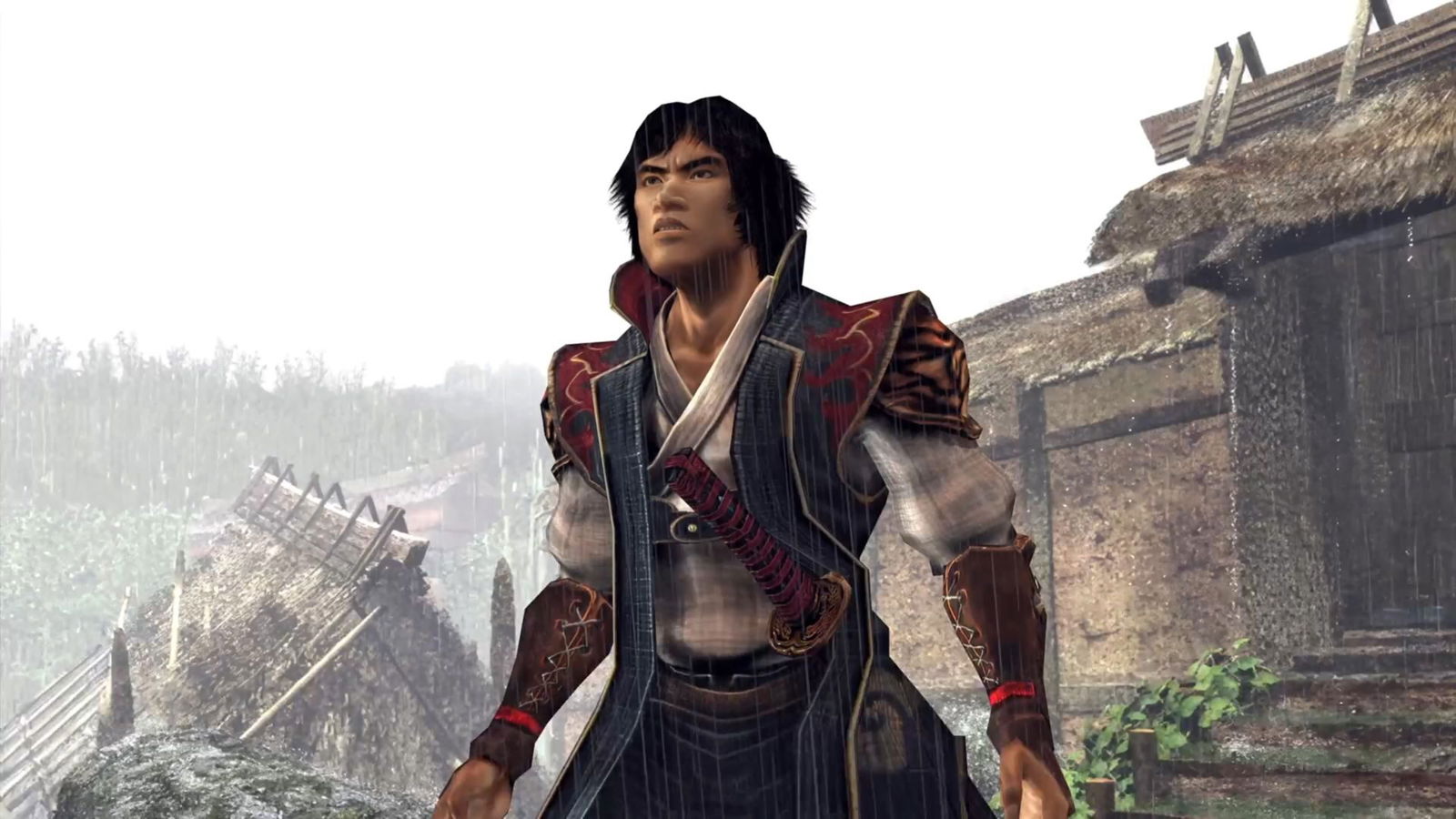
The colour of each soul type determines what the soul energy can be used for; Yellow Souls restore health, Red Souls can be used to upgrade weapons and armor, Blue Souls restore magic ability, while Purple Souls can be used to transform Jubei into an invincible Onimusha (Demon Warrior) for a brief period of time, once he has enough Purple Soul energy stockpiled. In this mode, Jubei’s hair turns white and he can cut loose with powerful sword or energy attacks without fear of being injured.
The weapons Jubei can wield include but are not limited to a samurai sword that can call down lightning, an ice-spear that can freeze and shatter enemies in its path, a double-bladed sword that summons a whirlwind, and a massive two-handed hammer whose strikes can create earthquakes capable of knocking all but the largest of Genma off their feet. In addition to their ultimate attacks that require Blue Soul energy, each weapon has its own repertoire of basic moves as well as secondary power attacks that can eventually be charged up to three stages, resulting in more complex and damaging attacks.
Finally, Jubei can also wield bows, arrows and even rifles as supplementary weapons, but he is incapable of crafting the ammo for them himself. He must procure it instead.
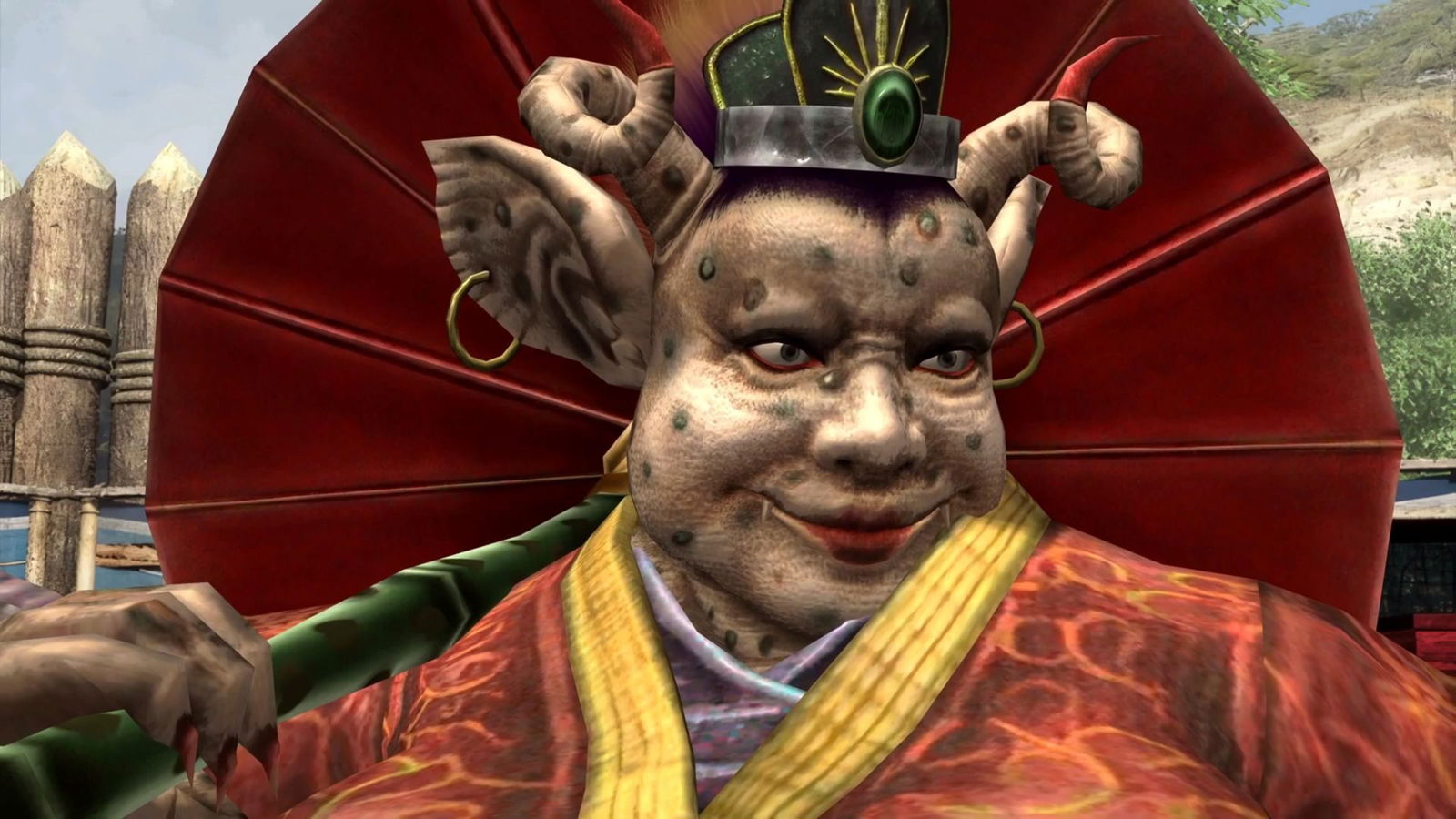
That brings us to a gameplay element new to the franchise in 2002 which has been faithfully preserved in this remaster, which is Onimusha 2’s flirtation with an economy-meets-gift-exchange-meets-dating-sim game mechanic.
For the opening third of the game, players will have access to the mining town of Imasho, where in addition to finding items, trinkets and quest items throughout their travels, players can visit the local shop and exchange gold that they’ve found towards rare items, curiosities, books, invaluable supplies and even armor and weapons to be used by Jubei’s comrades. At almost any time when not in combat, players can approach a comrade and give him or her any item from Jubei’s inventory designated as a “Gift Item.”
“…brings us to a gameplay element new to the franchise in 2002 which has been faithfully preserved in this remaster, which is Onimusha 2’s flirtation with an economy-meets-gift-exchange-meets-dating-sim game mechanic.”
If the gift is an appropriate fit for that character’s personality (e.g. Kotaru likes shiny, rare items that he can show off to others and Oyu has a soft spot for elegant and/or romantic things) they will react positively and give Jubei an item in exchange. It could be herbal medicine, arrows, rifle bullets, or even a special item that Jubei can re-gift to a different comrade. If your teammate doesn’t like your gift, they might show dissatisfaction and give something extremely common or next-to-useless in return, like “unique mushrooms.” Or they might hate the gift and take offense, prompting Jubei to awkwardly take the item back, which I found to be absolutely hilarious.
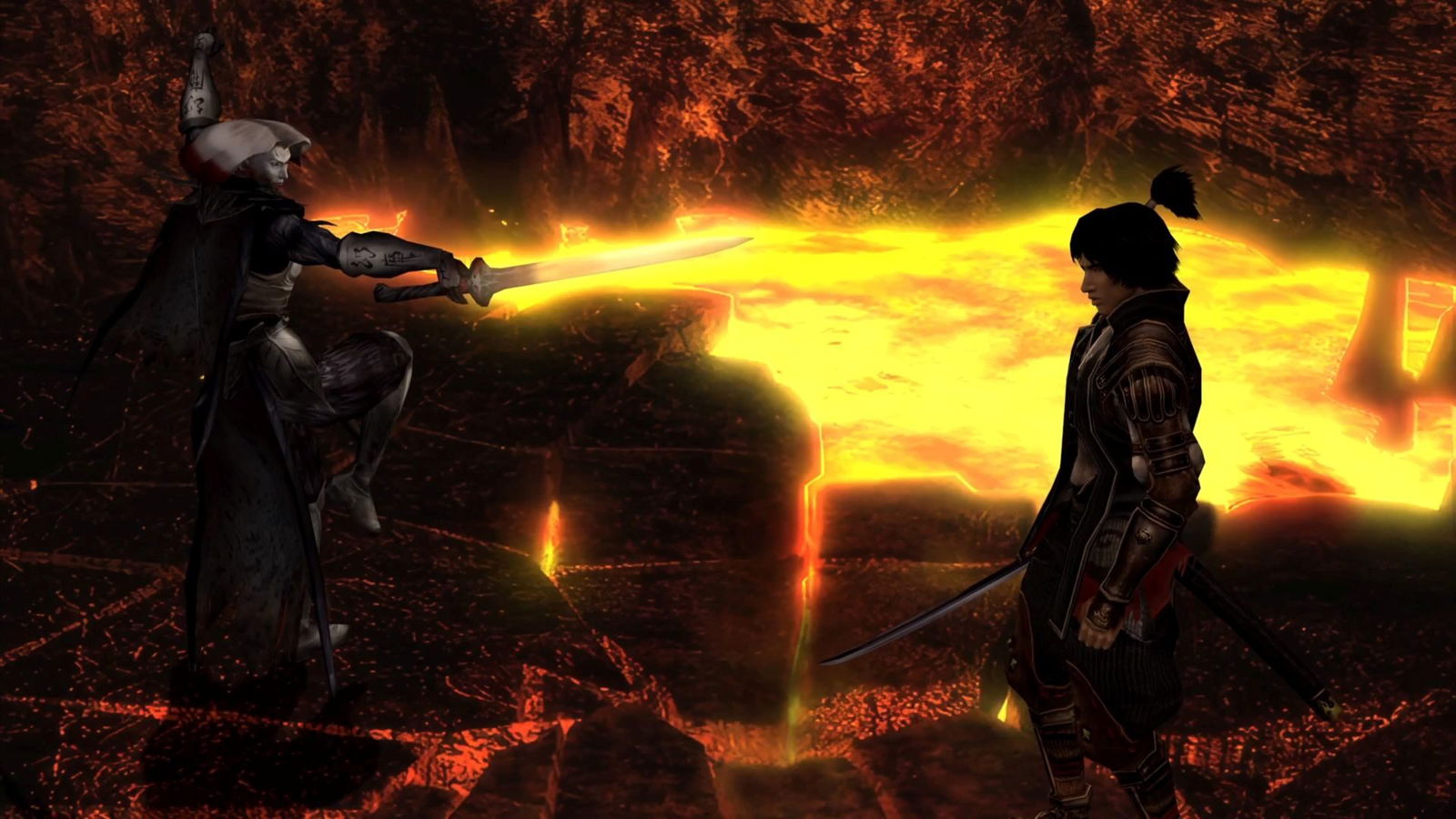
The more Jubei pleases an ally by presenting him or her with multiple gifts, the more likely that the ally in question will come to Jubei’s aid during particular scenes, and even serve as a playable character if and when Jubei is somehow incapacitated. Conversely, they may decide not to help if they feel Jubei hasn’t treated them well. This essentially means that players who are interested in seeing the stories of all four allies resolved will need to roll credits on this game at least more than once so that they can go back and butter up the comrades they neglected on the last playthrough.
Another strange aspect of Onimusha 2 that has humorously been retained in the remaster is that there isn’t a Japanese language dub. It’s the original 2001 English voiceover all the way, and to be frank, it’s horrible, but in all the best ways. Take any dialogue scene out of this game, listen to it while closing your eyes and you’ll be transported back to an era when poorly-dubbed and terribly-acted dialogue was a hallmark of a great Kung Fu flick…or at least it was for me as an 80’s kid.
Heavily exaggerated motion capture and a complete lack of proper lip-sync seals the deal, combining with the above vocals to attain a level of cheesy-ness that few other games can match (intentionally or not). This is especially true during Jubei’s more intimate moments with Oyu, which are unquestionably played for laughs. And while the Genma are entirely vile creatures hell-bent on devouring the human race, the most powerful among them are actually the funniest, all bearing ridiculous names (e.g. Ginghamphatts), displaying wacky behavior and stinking up the joint with ham-fisted acting that is so bad that they nearly run away with the show. It’s a beautiful train wreck that I can’t help but watch.
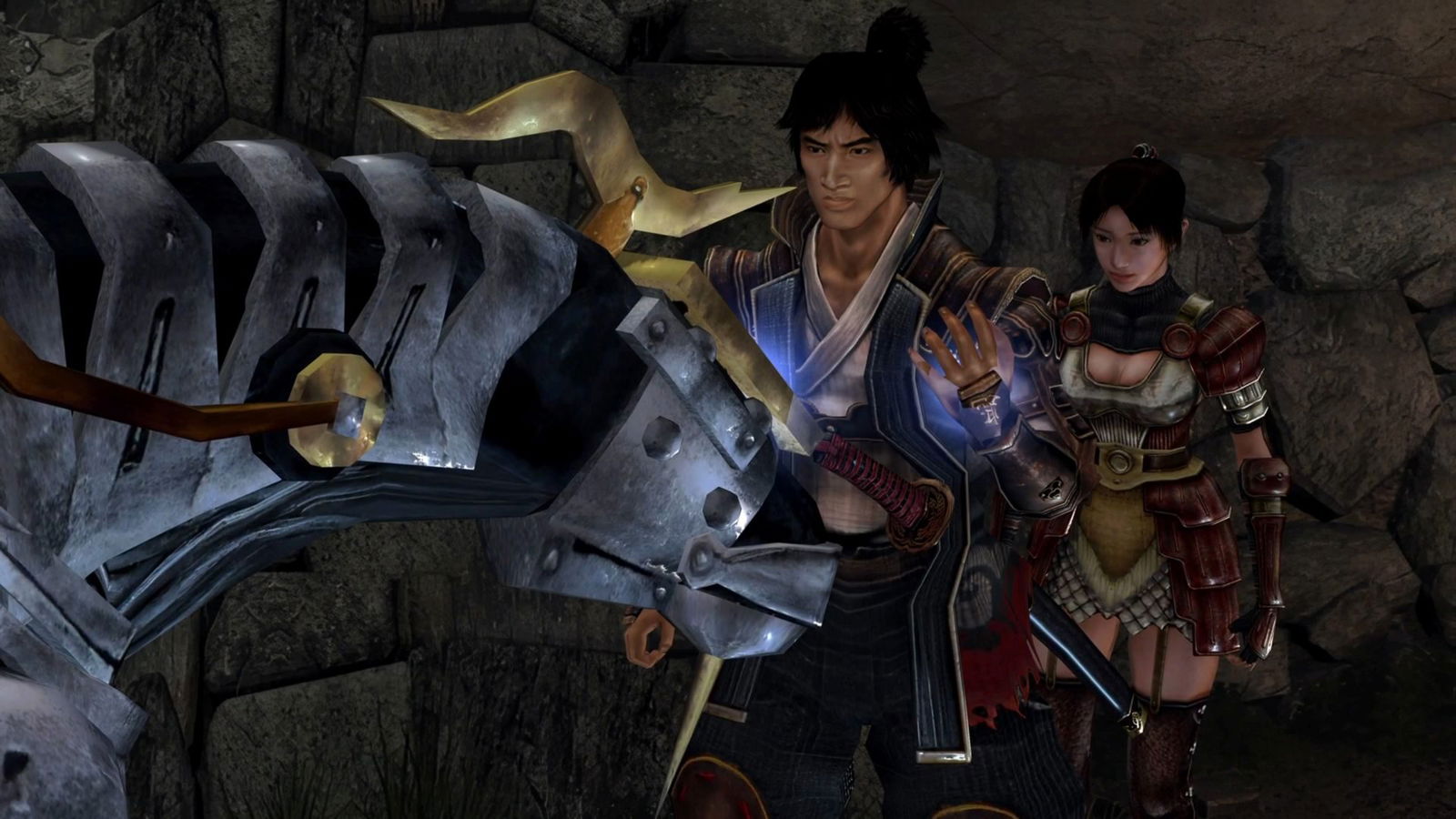
As I covered in last month’s preview, players can opt to play Onimusha 2 with its clunky, original 2002-era tank-controls, but if you are neither an old-school purist, nor insane, I highly recommend that all players switch to Normal Mode if they actually intend to have a good time. In addition, Control Type A assigns the “Open Map” command to the R3 button rather than L3, which makes it easier to avoid accidentally triggering the map to pop up in the middle of combat as the player uses the Left Analog Stick to move around.
As expected, Onimusha 2’s combat is fast, risky and satisfyingly flashy, with its only drawbacks being that the trigger button-based commands used for fast-swapping of weapons or activating Jubei’s Oni powers feel a bit sticky when they should respond instantly.
“Alas, as a product of its time Onimusha 2 has one main flaw that no amount of remastering the game can repair, that being the multitude of 3D-rendered, two-dimensional backgrounds and fixed camera angles that make up its gameplay environments.”
Alas, as a product of its time Onimusha 2 has one main flaw that no amount of remastering the game can repair, that being the multitude of 3D-rendered, two-dimensional backgrounds and fixed camera angles that make up its gameplay environments. Whether it’s through deliberate traversal of an area or accidentally backing out of one in order to create spacing while in combat, moving into another section of the map will immediately trigger a fade-out and load of the next section, often respawning enemies (which can be good for soul farming) but also inconveniently “disappearing” any wayward balls of soul energy in the room that players have yet to absorb.
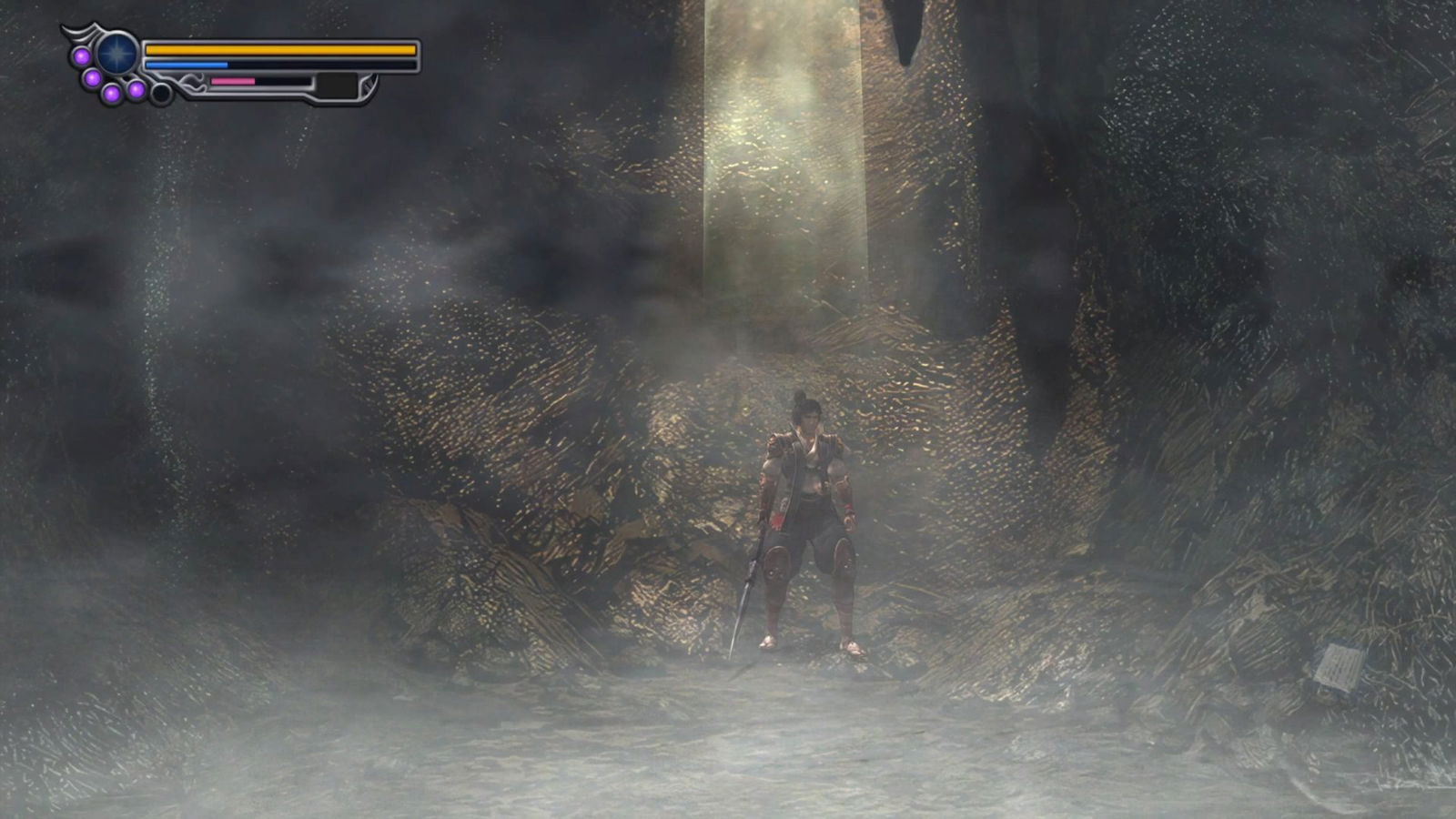
Entering a room also locks in the player’s forward direction of travel but then flips it once the player stops moving, which can frequently confuse players into running back out of the room when they intended to keep going forward. This also proves to be problematic even within level sections, as the fixed camera will instantly change the direction that the player is facing mid-combo should they cross from one designated part of the room to another. With three or more enemies on screen it can be extremely disorienting.
Having said all that though, fixed camera angles were a common staple of the early Resident Evil games, so it’s difficult to fault a remaster for faithfully preserving these limitations like a Jurassic Park mosquito in amber.
I was a bit disappointed however by the game’s extensive reuse of Onimusha: Warlords’ Gifu Castle for what would seem like over a third of the game. Granted there has been a 10-year gap since Samanosuke battled in those very same rooms, courtyards, hallways, and underground passageways, and it’s strangely nostalgic to revisit them as Jubei and observe how the castle has since fallen into ruin and disrepair.
But with many of the old routes buried, destroyed, boarded up or blocked off, these areas have become significantly less interesting. There isn’t even as much in the way of destructible items to slash or break to reveal hidden items, which is a drag. This hardly seems like something to complain about in the grander scheme of things, but it’s still a bit of a letdown.
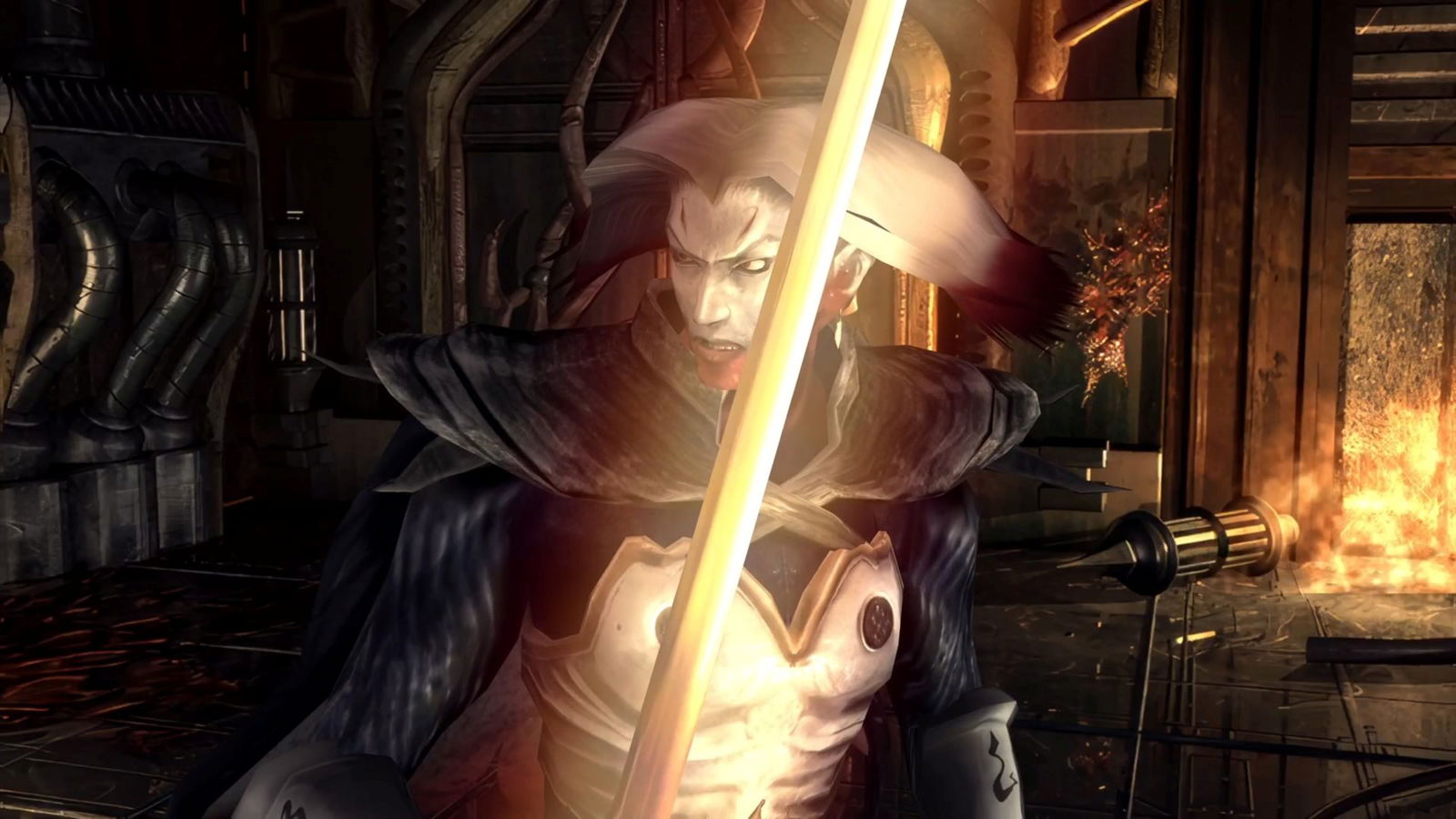
Nevertheless, for only $30 (USD) at the end of the day, Onimusha 2: Samurai’s Destiny is absolutely a steal to own, whether you choose to play it again and again to unlock every secret item, play every mini-game and master every difficulty level (including the one-hit-death mode fittingly-named “Hell”), or to keep as a digital museum piece in your library, as its Special Features section is chock full of extras. These include the entire original soundtrack and a renewed Gallery Mode which supports new high-resolution textures and adds 100 new artworks over that of the first game.
Finally, it’s also a campy romp of a sequel that for all its dark themes and violence doesn’t take itself too seriously, which is definitely refreshing after playing its prequel.
